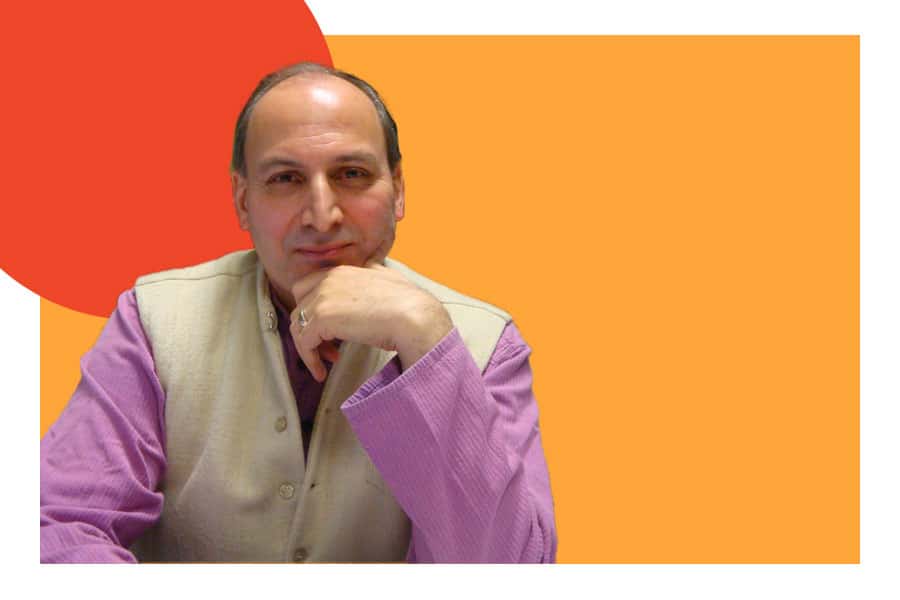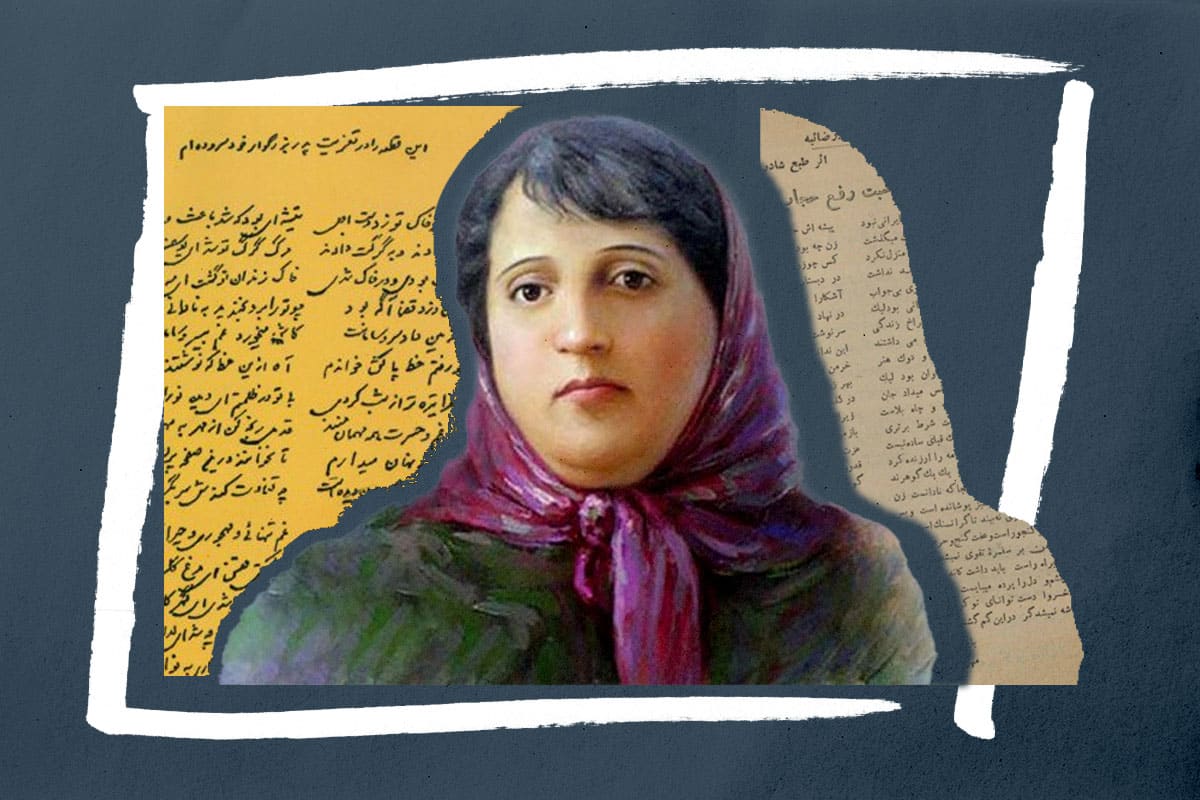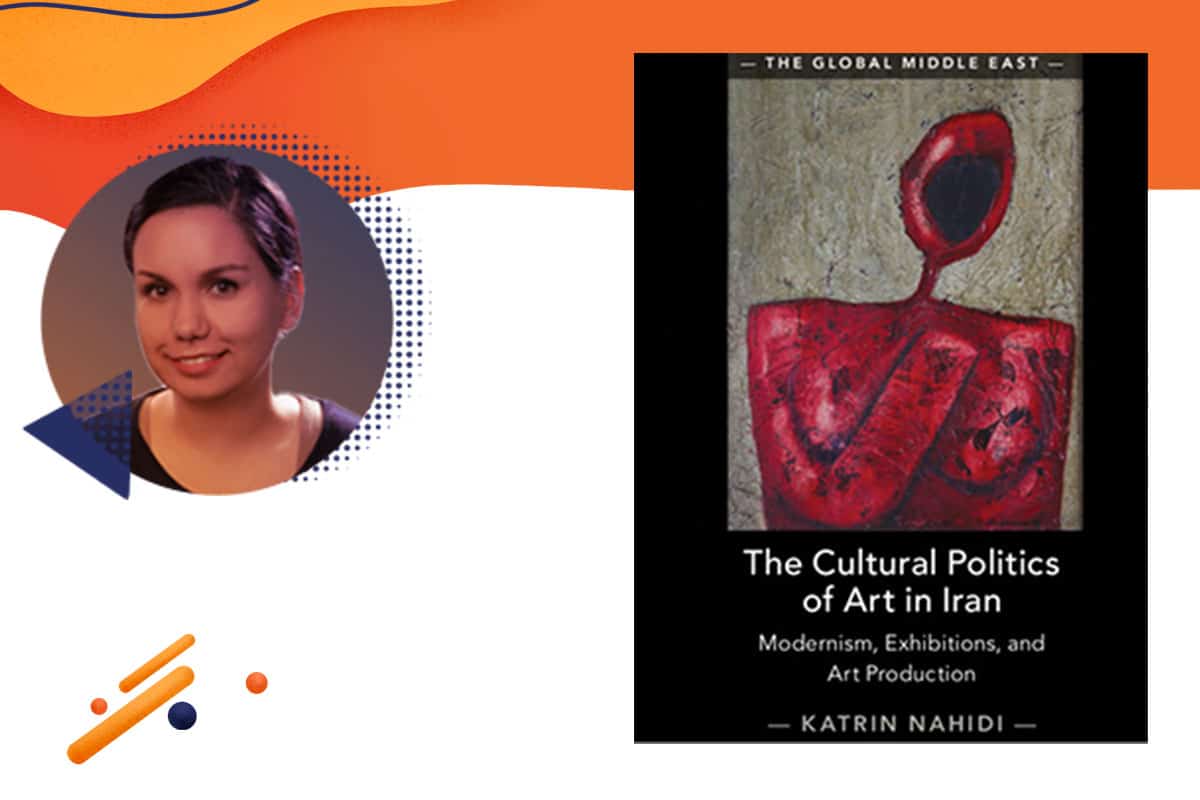About this Article
*This is a translation of Dr. Ramin Jahanbegloo’s interview with the Iran 1400 project.
Ramin Jahanbegloo provides an insightful assessment of Iran’s encounter with modernity during the past 100 years in an interview with the Iran 1400 Project. Jahanbegloo while making a clear distinction between “modernity” and “modernization,” looks at Iran’s societal reaction to the forces of modernity through a critical and contextual lens. What were the distinctive characteristics of Modernity and the Enlightenment in the West? When and how Iran became fascinated with modernity? What were the intellectual sources within the country responding to Iran’s attempt to emulate the West? What were the counter movements responding to the demands of both modernity and modernization? What are the challenges of the current generation of Iranians in a globalized world? And what are the prospects for a more modern Iran in the 1400s? Jahanbegloo’s answers to these questions are fascinating; however, the very questions he is posing and the approach he is taking in answering some of these age-old questions, offer a unique critical perspective on Iran’s response to modernity and modernization.
Modernity Defined
The concept of modernity, as we know it today, refers to a particular period in the history of humanity and especially the history of the West because modernity was initially formed and shaped in the West with its new outlook about the world and human beings in it. Especially in the philosophical realm, we are speaking about a new way of thinking about human beings as the “I” of the subject who sees himself as the master, the proprietor, of nature and with a clear self-awareness. Modernity takes the Cartesian form of the dictum “ I think, therefore I am.” Then, we have the Scientific and the Industrial Revolutions and especially the political achievements of Modernity which stretches from the Renaissance to the Enlightenment period. After that, with the American and the French Revolutions, modernity takes on a political form influencing the entire world. It is then that we are able to speak about modern democracy and the project of modern nation-states.
Iran’s Encounter with Modernity
If we want to know about Iran’s encounter with modernity, we can say that it is only after the period of the Iran-Russia War that Iran really has direct contact with Europe and Modernity. Iran’s defeat in these wars and the humiliation she endures with the two treatises of Turkamanchay and Gulistan, forces both Iran’s aristocracy and the intellectuals to look for modern solutions especially in the areas of military technology and strategy; and little by little slowly becoming a modern state. It is at this point that we start somewhat to talk about modern intellectual elites in Iran. These are those people who are in contact with the West and Europe and in short I must say that their encounter with the West, at first, is quite amazing for many of them. For example, when you read these peoples’ accounts of their travels, you can discern how strongly they are affected and influenced by their experiences there. Even the Qajar Kings, in their diaries when writing about their travels to Europe, are amazed and amused; for example, they write about the zoo, there, or their beggars on the streets. Well, later on, during different periods, this amazement takes on a different form of which we speak later.
The Year 1921 (1300), the Start of Modernization and Optimism about Modernity
Reza Shah’s Era, for the modernization project and for the elites’ awareness of modernity there, is, perhaps, the most important period of the 20th century for Iran. Even if we compare it to our own time now, I think that period is even more important than our current one. Why? Because after the Constitutional Era, we have an abundance of political, cultural and scientific elites in Iran. Among these elites, whether they are on the socialist left or the liberal right side of the political spectrum, we have individuals like Ali Akbar Siyasi, Mohammad Ali Foroughi, Ali Akbar Davar. Then you have people like Sadegh Hedayat; you have Bozorg-e-Alavi, Seyed Mohammad Ali Jamalzadeh. Anyway, there is a major difference between them and the elites of today; they all, in some ways, were influenced by the Constitutional Era and they all wanted Iran to become modern. For them, this desire for modernization did not necessarily mean the acceptance or the approval of Reza Shah. For Example, we have people on the left like Bozorg-e-Alavi, Prisoner 53 or Taqi Arani, who do not go along with Reza Shah’s reign or his dictatorial ways. What is important, though, is that they all wanted a modern Iran and wanted to create a modern state there. They all believed there must be modern institutions in Iran, which actually were formed and even survived until the Islamic Revolution– for example, the modern judiciary, the Office of Public Records, the modern Education and Training Institutions; in fact, individuals like myself are the product of those modern institutions. I think those intellectuals have had a considerable influence on the evolution of modern art, modern culture, modern science and modern politics in Iran.
Confronting Modernity: the Pessimistic Outlook, Return to the self and Ethnocentricity
Mohammad Reza Shah’s period is substantially different from that of the Reza Shah’s is that the intellectual and the political elites during the first Pahlavi were quite optimistic about modern rationalism and the creation of the modern state. Almost all of them, even the Marxists like Taghi Aarani or Bozeg-e-Alavi and others had the same positive attitude. Well, early on, during Mohammad Reza Shah’s reign, we still have a kind of modern technocracy; we still have a group of elites who have kept their optimism about modernity. However, after the 1953 Coup and especially after September 1941, the more traditionalist elements, who had retreated since the first Pahlavi, re-entered into the political scene. Their political stance is strictly traditional and I must say that at times even violent. They assassinated three of the Shah’s prime ministers, Navab Safavi, and others. And finally, during the 1960s and the 70s aside from these militant groups like Mojahedin-e-Khalgh (MEK) and the Fadayyan, we have ideologically inclined intellectuals like Al-e-Ahmad and Shariati who are totally anti-western and are ethnocentrist. This is something that we did not have during Reza Shah’s or it was very rare. While it is true that many of our intellectuals were critical of Reza Shah but they were not anti-western. Therefore, our anti-western and ethnocentrism belongs to Mohammad Reza Shah’s era, an attitude that did not exist during Reza Shah. They, thus, start questioning Modernity in the name of “returning to the self” or return to the indigenous national identity. Using Marxist and Islamist ideologies, which was weakened during Reza Shah’s time, they offered a voice contrary to the majority of our intellectuals inside and outside of Iran, who in one voice were calling for creating a modern Iran during the first Pahlavi. During Mohammad Reza Shah, however, there were serious doubts about modernity which eventually resulted in the Islamic Revolution.
Opposing Modernity and the Ideological Turn
Well, in any case, the Islamic Revolution, at the first glance, is completely anti-modern, anti-Western, and anti-elite or I should say it is against modern-elites. It almost wants to return to tradition; wants to go back to the past; there is no doubt about that at all.
Now, a second point that in my opinion is very important to address is that the Islamic Revolution, itself, somewhat is the product of a mistaken approach Iran had taken toward modernity. I think, from a sociological and philosophical standpoint, it was the second Pahlavi’s era that produced the individuals who eventually brought about the Islamic Revolution. It also means that the project of Modernity and the Enlightenment had already been defeated by that time; how else could these kinds of individuals dominate the Iranian society and replace their own traditionalist retrogressive ideology for the project of the enlightenment and modernity? How else could modernity, which was being supported by the likes of Fouroughi, Davar and Sadegh Hedayat or Bozorg-e-Alavi and Jamalzadeh, during the Reza Shah’s time, be replaced by the Islamist ideology?
The Iranian revolution is basically the end of Reza Shahi’s project; it is basically the end of modern elitism; it is the end of any sense and effort to create an Iranian enlightenment.
Therefore, what happened was that in the first decade of the Revolution, we see the rise of various ideologies which are ostensibly antimodern and anti-enlightenment; they succeed because there is not the slightest sign of critical thinking or critical analysis or ideas any place to be found. The problem was that whether these ideologies were from the left or the right, whether they were from the official Islamist front or from the Mojahedin, you had to accept them at face value without asking any questions.
The masses, therefore, turned more to these ideologues rather than to their elites. During the Iranian revolution, intellectuals either perished, went into exile or they were silenced. With the exception of Ayandegan Newspaper during the first year of the Revolution, you do not have many intellectuals who wrote for the daily newspapers. Therefore, the only project became those belonging to the traditionalist retrogressive groups; the Enlightenment project which had started in 1920 in Iran is thus defeated.
Modernity in Today’s Iran
Well, Iran, at this point, is and is not modern. How is she modern? Iran has been in pursuit of modernity for a long time and you are able to observe this in the new generation of the Iranian civil society who desire to reap the benefits of modernity through arts, music, painting, or science. Of course, many of them live outside of Iran. On the other hand, Iran has not become modern because we have lost all our modern achievements of the Constitutional Era and the Reform period of the 1920s. We have lost them due to the fact that the political and ideational agenda of the Islamic Republic has been to destroy the achievements of Reza Shah’s era: the reforms of establishing a secular judiciary; women’s rights or modern educational system. There have been many different types of reforms but I just mentioned those three. In addition, after the Revolution, modern elites lost their influence in Iran. What has taken place is that alongside those official efforts and centralized ideological messaging, after the Iran-Iraq War, from the 1990s onward, we observe the birth of a new generation of Iranians who seek to have new magazines, new translated works; they want to familiarize themselves with modern philosophy and modern science which is what is happening now. And of course, we have seen the result of these efforts during the past 20 years in various movements in Iran especially the ones with massive youth participation like the Green Movement. This confrontation between the old and the new did take place but the violent response from the government prevented these types of movements from taking roots in society, because we always make the same mistake; the Islamic Republic and the project of Revolution have always claimed to be science-oriented; they tell us that we want to have nuclear energy and possess a nuclear bomb; we don’t have anything against modern science, but at the same time we don’t accept modern thinkers and intellectuals. They say give us nuclear energy but don’t read Descartes; don’t read Hagel, Nietzsche or Marx; they are dangerous; they will provide you with critical thinking ability!
Anyway, we have had this type of instrumental modernization, and instrumental rationality, but not modernity, in the Islamic Republic or shall I say in the post-revolutionary Iran. This instrumental modernization has found its own place and has its own facts and figures but it lacks any type of critical thinking; it actually has rejected any and all the projects of the Enlightenment which could have resulted in upholding civil liberties and human rights; where, in fact, modernity entails both of these elements. In Iran, we have separated these from each other. Naturally, if we continue to separate the technical aspect of modernity from its human rights aspect, there will not be a democratic future for Iran. We only could have an authoritarian or a totalitarian form of government much like the Stalinist Russia or Natzi Germany– but not democracy.
The Prospect in 2021 (1400) and the challenges of the Younger Generation
This generation, in my opinion, has a huge problem on their hands; It is an educated generation, it is a generation which has produced a large number of highly educated professionals; it is a generation which possesses the technocratic mindset; it is a generation that understands business; but it is also a generation without any critical analytical thinking; it is a generation that is unable to look at itself with the critical eyes; it is a generation that cannot find the road to democracy and democratization in the country nor can they draw the roadmap that would lead them to democracy. Therefore, they see the solution to every aspect of their problems in modern technology. They think if we could import these technologies, we could have a modern state and that will be sufficient. In fact, this is the same mistake that we made during Mohammad Reza Shah’s period.
Technocracy always needs to have an intellectual minority along its side; there has to be a critical thinking elite accompanying it. Modernity and the Enlightenment are not just science-based or strictly technological. So, you need to have an enlightened elite who can govern society, to have the political knowledge to administer. Firstly, they must have a democratic project or agenda; democracy in any form or shape; it could be monarchical or even conditional or constitutional monarchy; it does not make any difference; but it must be based upon the principle of Republicanism or representation in which elections, civil liberties, and civil rights are meaningful.
Well, these are not necessarily the things with which these young technologically savvy individuals have been grappling or about which they have thoughtfully pondered. Thus, there is that ever-present political vacuum. In other words, as soon as you want to implement this social project, just like when under the First Pahlavi, because you had the benefit of having many elites on your side or perhaps in the center of power, they were able to implement it, you must have the elite beside you. This project will not take place on its own without the democratically-minded people. You must educate and train these people. We educate and train a considerable number of medical doctors and engineers, but we do not produce many philosophers for example. We don’t train many scientists or researchers in the field of politics and in the humanities in general either inside or outside Iran! Well, we need them just the same. In the west, in this project of Modernity, these elements were side by side of each other. When you look at the Renaissance, you see painters; you have architects and engineers; you have people like Machiavelli; in other words, you have statesmen; they are all present side by side. They are all part of the same project. But, we have separated them from each other; and once we do that, then, naturally, the result is not going to be what we desire!
Professor Ramin Jahanbegloo is the Executive Director of the Mahatma Gandhi Center for Nonviolence and Peace Studies and the Vice Dean of the School of Law at Jindal Global University in Delhi. He received his Doctorate of philosophy from Sorbonne University in Paris and was a postdoctoral fellow in Middle East Studies at Harvard. He has written numerous books and articles in Farsi, English, and French on Western philosophy and modernity.
He was awarded the Peace Prize from the United Nations Association in Spain, for his extensive academic work in promoting dialogue between cultures and his advocacy for non-violence activism.
-
This author does not have any more posts.





